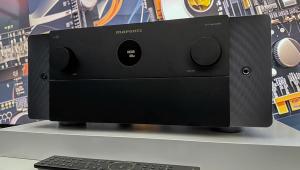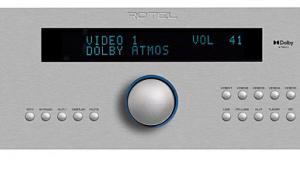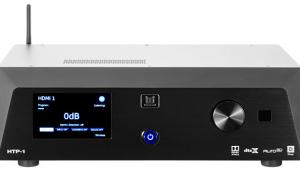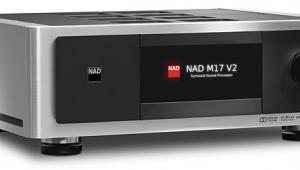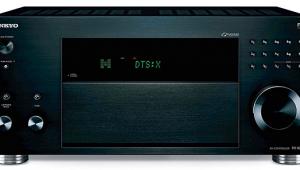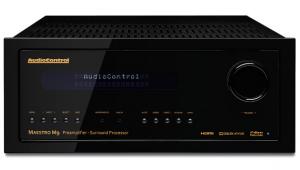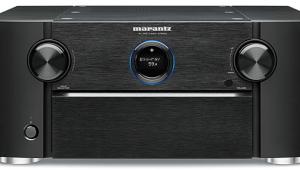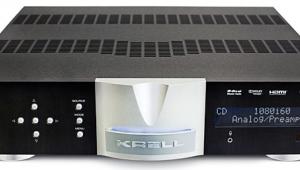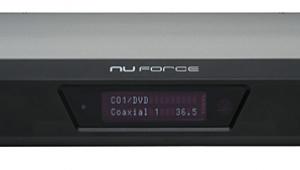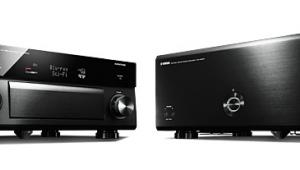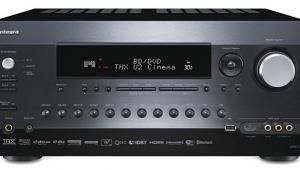Integra DHC-80.3 Surround Processor and DTA-70.1 Amplifier Page 2
Higher Resolution
The DHC-80.3 is a standout when it comes to audio features. But we’ve been down that road before. I was a big fan of Audyssey’s DSX processing when I reviewed the DHC-80.1. I touted the benefits that the width channels add to the soundstage with 5.1 mixes, although I didn’t find much to be gained from the height channels. The width channels offered seamless panning of surround effects and a much wider soundstage that doesn’t sound artificial or gimmicky. But the real highlight of the DHC-80.3 (and the DHC-80.2 before it) is the inclusion of Audyssey MultEQ XT32. Audyssey’s latest room correction system is a big step up from its previous XT solution. It bridges the gap between the EQ process and the flagship designs from other companies.
Let’s face it, with audio playback, the biggest hurdle in the overall experience doesn’t come from your speakers and front end. It comes from the room. The room has more to do with how you perceive sound and experience a soundstage than any single component in your rack. While people rush to go buy the newest speakers and amplifiers hoping for just a bit more performance than what they had before, the room is the elephant in the equation that most people ignore. MultEQ XT32 does its best to tame that elephant, and it does so better than Audyssey has ever done before.
I was already thrilled by the prospect of dual independent subwoofer equalization, but the increase in filter resolution isn’t subtle. Fine detail in recordings sounded better than ever, and the slight harshness I occasionally noticed in the midrange is gone. While I would always rely on Audyssey for movie soundtracks, I wasn’t always a fan with music playback. Not so anymore. MultEQ XT32 does a beautiful job with every facet of the audible spectrum and coaxed even the finest details out of the recordings I listened to. At the end of the day, this is the reason to own this processor. I love the other bells and whistles the DHC-80.3 brings to the table, but this is one feature that stands to noticeably improve the sound of your system.
DTA-70.1 Amplifier
While most manufacturers are upping their processors’ channel counts with new audio processing features, their complementary amplifiers don’t typically support more than seven channels. The only exception I’ve run into is Denon, with its insane 10-channel behemoth that costs more than this duo on its own. Integra delivers an outstanding THX Ultra2–certified nine-channel amplifier with the DTA-70.1, which complements the DHC-80.3 perfectly in fit and finish.
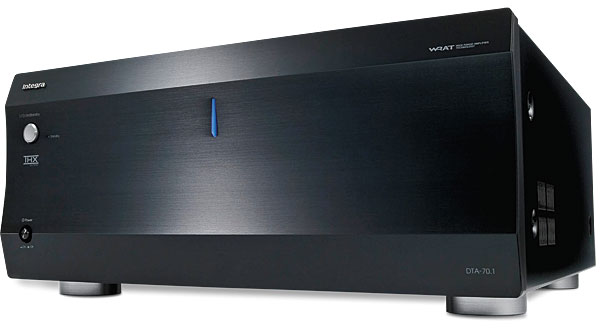
The DTA-70.1 sports a solid, one-piece, machined aluminum front panel that looks very elegant with its spartan finish and single power LED. The back panel is laid out nicely with plenty of room between connections, despite having nine channels to deal with. There are gold-plated XLR connections for all channels, as well as standard RCA inputs. A simple toggle lets you switch between the two. The speaker posts are heavy duty and of the five-way binding variety. All are delineated by color per THX specification. You’ll also find a toggle for speaker impedance and a 12-volt trigger jack. Integra further offers a switch for automatic power mode that senses whether a signal is present.
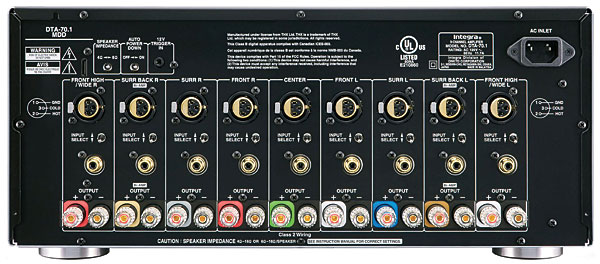
In Use
I’ve had a year to get to know this processor. While I only received the DHC-80.3 a few weeks ago, I’ve had a DHC-80.2 in my system for nearly a year before it. The audio side is identical with the exception of adding the latest DTS Neo:X processing. For this review, I swapped out my Outlaw Audio Model 7900 for the DTA-70.1 and set about enjoying what Integra had to offer. The 7900 is a beast of an amp; it delivers 300 watts of pure dual differential power to each of its seven channels of output (all channels driven into 8 ohms) and requires two dedicated 15-ampere circuits to deliver its full capabilities. So the DTA-70.1, rated at 150 watts per channel (two channels driven into 8 ohms) seemed like a bit of a lightweight upon first inspection. But while it wasn’t the powerhouse the 7900 is, it was far from incapable.
I’m surprised an amp with this many channels can manage to fill the shoes of that THX Ultra2 badge on the front panel. The combination did a tremendous job with film soundtracks. The last few weeks of my review period delivered some of the best I’ve heard recently, with Blu-ray releases of the Star Wars saga, the Jurassic Park trilogy, and summer blockbusters like Thor and Pirates of the Caribbean. Never once did I feel like the DTA-70.1 was struggling, even in the most demanding sequences, and the Audyssey MultEQ XT32 room correction coupled with DSX and Dynamic EQ had my system at its knees. Dynamics were jaw dropping in the mind-blowing pod race sequence in Star Wars: Episode I. Even at near reference level, nothing seemed to be giving up (except my walls), and every whizz-bang sound effect was effortlessly delivered all around me. With music, the DTA-70.1 started to show a bit more weakness driving my Paradigm Signature S8 speakers compared with my Outlaw reference amp. I just found dynamic range a bit limited with some of my high-resolution material.
The DVD-Audio of Gordon Goodwin’s Big Phat Band XXL didn’t have quite the dramatic dynamics that my Model 7900 delivers with the DHC-80.3. Although the fine detail was still there, it was slightly muddled in comparison. At lower volumes, the difference was less apparent, but I like to listen to my music pretty loud, and the Outlaw never seems taxed, regardless of how loud I choose to listen.
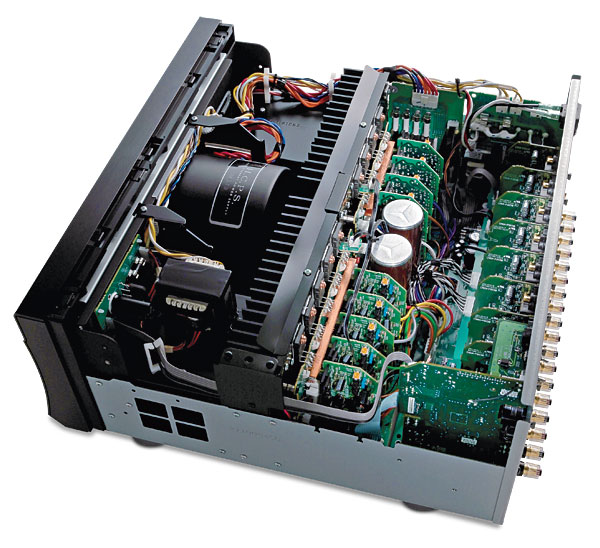
The DVD-Audio of Blue Man Group’s Audio was also a standout. Instruments seemed to come out of nowhere within the DTA-70.1’s inaudible noise floor. But while the DTA-70.1 was very quiet, it didn’t seem to bring out these instruments with the snap that the Model 7900 brought. Of course, it’s an unfair comparison: The Outlaw costs twice as much, delivers twice the power, and is a fully differential design. Knowing what it can do with the DHC-80.3, though, it’s fair to say the DTA-70.1 might (depending on the demands your speakers place) hold back the potential of this very fine processor compared with a more refined and powerful amp. That said, what the DTA-70.1 delivers at its price point is beyond impressive. Keep in mind that the expense of adding nine channels of amplification to a surround sound setup can be taxing, and at its price point, the DTA-70.1 leaves little to be desired with even the most demanding material. It would also be a great addition to most A/V receivers out there if you’re looking to up your game in the amplifier department through some existing preamp outputs. The fit and finish are impeccable, I loved the solid-aluminum front panel, and the well-spaced connections on the back make hookup easy.
Wrapping It Up
Integra continues to amaze with its price-to-performance ratio. With Audyssey MultEQ XT32, the company has managed to mine audio gold with the DHC-80.3. It’s left no stone unturned when it comes to making the most out of every audio format out there. With 4K support, Integra makes your decision as futureproof as you can get today and didn’t compromise on the quality of the video processing to get it. While the DTA-70.1 isn’t quite the no-brainer that the DHC-80.3 is, it delivers tremendous value and performance that will keep all but the most demanding audiophiles satisfied. A solid one-two knockout from Integra!

